Time-Lapse | Earth from Bruce W. Berry Jr on Vimeo.
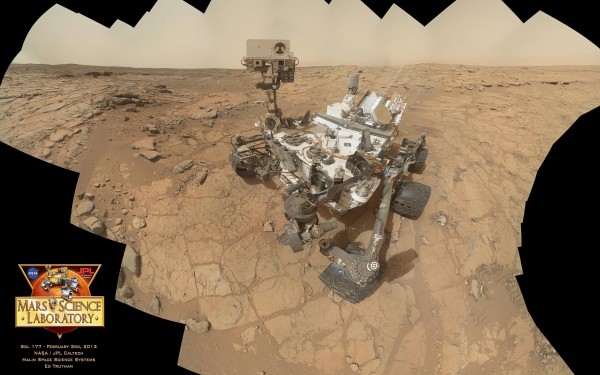
NASA / JPL / MSSS / Ed Truthan
A total of 64 frames shot by the MAHLI on the end of Curiosity’s robotic arm were required for this large mosaic. On sol 177 (February 3, 2013), the rover was sitting at the “John Klein” site, preparing to drill for the first time. Zoom in at lower left and you can see two gray marks on the ground where Curiosity tested out the drill in percussion mode on sols 174 and 176.
via Yes, it was once a Martian lake: Curiosity has been sent to the right place | The Planetary Society.
Should be visible a little sometime next week, at sunset a bit southeast of where the sun sets.
I’m wondering if the asteroid “could” hit the Earth at some time? does it actually pass through the same spot as the Earth’s orbit?
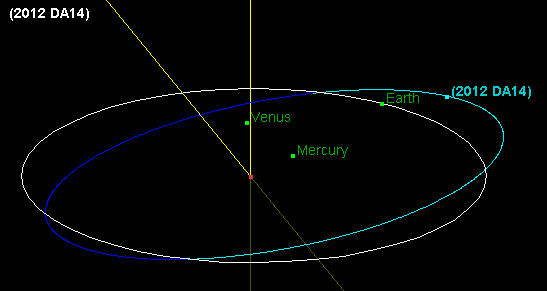 Photo Credit: NASA
Photo Credit: NASA
on feb 15/16, a little chunk of rock (45 meters = 150 feet across), known as asteroid 2012 DA14, which has been orbiting around the sun for a long time on a not-quite-circular orbit, will pass close by the earth.
actually, asteroid 2012 DA14 will pass very close to the earth – only 17,200 miles (27,680 kilometers) away, which is closer than the moon’s orbit and even closer than some high-orbiting communications satellites!
but do not worry, asteroid 2012 DA14 will not hit earth.
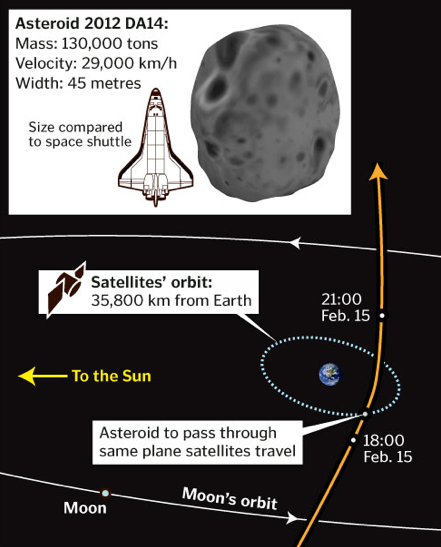 Photo Credit: NASA via Calgary Herald
Photo Credit: NASA via Calgary Herald
the asteroid will not be visible to the naked eye, but should be visible using binoculars to many people across the planet, if you know where and when to look. check out satflare.com or http://www.heavens-above.com/ to see if it will be visible where you are.
NASA / JPL / UMD
Deep Impact observed comet ISON on January 17 and 18, 2013, taking more than 150 photos. The comet was more than 5 AU away from Deep Impact at the time. These were the first space-based observations of comet ISON.
via Venerable Deep Impact spacecraft has photographed comet ISON | The Planetary Society.
Newly discovered comet could be spectacular sight in fall 2013. Located beyond Jupiter’s orbit now. Heading for close encounter with our sun next year.
via Big sun-diving Comet ISON might be spectacular in 2013 | Space | EarthSky.
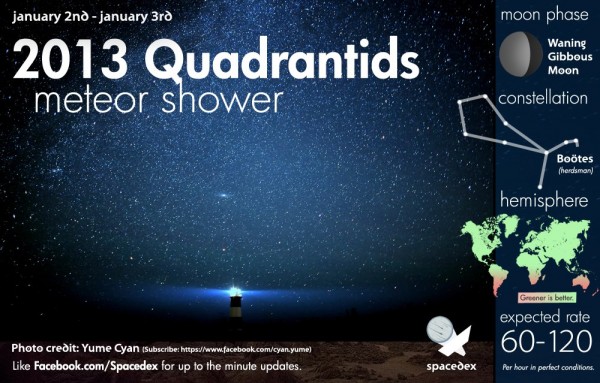 The first major shower of 2013 is the Quadrantids meteor shower. This annual shower has one of the highest predicted hourly rates of all the major showers, and is comparable to the two of the most lively, the August Perseids and the December Geminids. This celestial event is active from December 28th through January 12th and peaks on the morning of January 3rd. In relation to meteor showers, the peak is defined as the moment of maximum activity when the most meteors can be seen by the observer.
The first major shower of 2013 is the Quadrantids meteor shower. This annual shower has one of the highest predicted hourly rates of all the major showers, and is comparable to the two of the most lively, the August Perseids and the December Geminids. This celestial event is active from December 28th through January 12th and peaks on the morning of January 3rd. In relation to meteor showers, the peak is defined as the moment of maximum activity when the most meteors can be seen by the observer.
While the plus side of this annual shower is its ability to produce fireballs, and its high hourly rates, the downside is its short peak. Quadrantids has an extremely narrow peak, occurring over just a few short hours. The Quadrantids are also well known for producing fireballs, meteors that are exceptionally bright. These meteors can also, at times, generate persistent trails (also identified as trains).
Those living in the northern hemisphere have an opportunity to experience a much better view of the Quadrantids, as the constellation Boötes never makes it above the horizon in the southern hemisphere. This is great for those living in North America, much of Europe, and the majority of Asia.
Unfortunately, those of you living in Australia and lower portions of South America will have a difficult time observing the Quadrantids. Observers in higher latitudes will have better gazing conditions, but nevertheless will need to be wary of cloud cover, as conditions are typically cloudy during this time of year.

Artist’s impression of the first planet discovered orbiting the star Alpha Centauri B, a member of the triple star system that is the closest to Earth. The planet was found in 2012 with the HARPS spectrograph on the 3.6-m telescope at ESO’s La Silla Observatory in Chile.
ESO/L. Calçada/N. Risinger (skysurvey.org)
This image is posted under a Creative Commons Attribution license. You may reuse it for any purpose as long as you include the above credit.
Got to keep this in mind, in 2013 comet C/2012 S1 (ISON) will visit the sun and the earth in Nov & Dec 2013.
Editor’s note: Space blogs are abuzz about the recent discovery of comet C/2012 S1 (ISON), which has the potential to be a bright one late next year. I turned to amateur astronomer Bill Gray to ask for more details and whether I should be getting excited about this comet yet. Here’s what he told me. –Emily Lakdawalla
Comet ISON: 30% chance of awesome, 60% chance of that being wrong | The Planetary Society.
Andromeda, otherwise known as M31, is among our nearest neighbors, “only” 2.5 million light-years away. Its line-of-sight speed has been known for a long time (from Doppler measurements), but until now we didn’t know whether its actual direction of motion is more toward us or more tangential to us.
The answer: Andromeda is coming at us, and will “collide” with the Milky Way in about four billion years. I put the word “collide” in quotes because while the collision will have a dramatic effect on the appearance of both galaxies, physical encounters between stars (and the planets they contain) will be really rare, because there is so much empty space between stars. Our solar system will most likely be unaffected by the collision, and will be having greater problems at that time due to our Sun’s behavior; that’s roughly the same time it’s estimated that the Sun will expand into a red giant.
Artist's views of a night sky transformed by a galaxy merger | The Planetary Society.
Since I really love LEGO and have a bunch of small kits assembled on my office shelf, this really sounds good to me.

I think I’ve received a dozen emails from people pointing me to a LEGO model of the Curiosity rover at the CUUSOO website. CUUSOO is a website where LEGO modelers can share concepts for kits. The CUUSOO community can vote to support concepts, and if the concept receives 10,000 votes, it goes to a LEGO committee. Each quarter, the committee reviews the supported concepts, and may choose one to actually bring to market as an official LEGO kit.
We at The Planetary Society are aware of how Neil Armstrong’s first step onto the Moon sparked so many of our Members’ lifelong interest in space. We invited them to share their stories about how Armstrong affected the course of their lives.
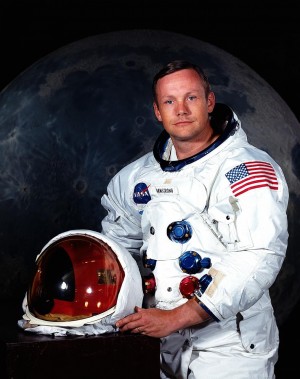 Neil Armstrong, donned in his space suit, poses for his official Apollo 11 portrait. Armstrong began his flight career as a naval aviator. He flew 78 combat missions during the Korean War. Armstrong joined the NASA predecessor, NACA (National Advisory Committee for Aeronautics), as a research pilot at the Lewis Laboratory in Cleveland and later transferred to the NACA High Speed Flight Station at Edwards AFB, California. He was a project pilot on many pioneering high speed aircraft, including the 4,000 mph X-15. He has flown over 200 different models of aircraft, including jets, rockets, helicopters, and gliders.
Neil Armstrong, donned in his space suit, poses for his official Apollo 11 portrait. Armstrong began his flight career as a naval aviator. He flew 78 combat missions during the Korean War. Armstrong joined the NASA predecessor, NACA (National Advisory Committee for Aeronautics), as a research pilot at the Lewis Laboratory in Cleveland and later transferred to the NACA High Speed Flight Station at Edwards AFB, California. He was a project pilot on many pioneering high speed aircraft, including the 4,000 mph X-15. He has flown over 200 different models of aircraft, including jets, rockets, helicopters, and gliders.
In 1962, Armstrong was transferred to astronaut status. He served as command pilot for the Gemini 8 mission, launched March 16, 1966, and performed the first successful docking of two vehicles in space. In 1969, Armstrong was commander of Apollo 11, the first manned lunar landing mission, and gained the distinction of being the first man to land a craft on the Moon and the first man to step on its surface. Armstrong subsequently held the position of Deputy Associate Administrator for Aeronautics, NASA Headquarters Office of Advanced Research and Technology, from 1970 to 1971. He resigned from NASA in 1971.
Died: August 25, 2012, Cincinnati
Born: August 5, 1930, Wapakoneta
Some descriptions of the hardware on the Curiosity Rover.
Sampling Mars, Part 1: The Hardware | The Planetary Society.
http://www.db-prods.net/blog/wp-content/uploads/2012/08/Sol2_pano_full_syntheticsky_VR_SharpMount1.jpg
Le site de Curiosity, au cratère Gale, en full panoramique ! Chez Damien Bouic.
The best 360-degree rotatable version of the sol 3 Mastcam panorama I’ve seen yet. This one requires Flash. For those of you on iOS devices, your best option is this one.
The full-resolution MARDI images are just as great as we anticipated. As of the moment that I write this, there are 110 full-resolution frames on the ground out of the roughly 1500-image sequence. Most of these are separated in time by several seconds, but among the recently returned data are the first 42 frames, inclusive; we’re on our way to getting the full-resolution movie speaking both in terms of temporal and spatial resolution. Of the first 42 frames, the first 26 are dark, taken before the heat shield separated. This is the 27th. I animated these and the subsequent ones, aligning them all (without rotating them) on a crater at the bottom center of the visible Martian surface, and was really quite amazed at how smooth the descent of the heat shield was. This version is at half the full resolution.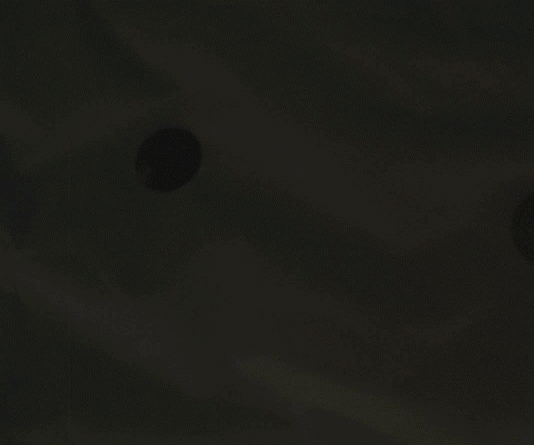
Credit: NASA / JPL / MSSS / Emily Lakdawalla.